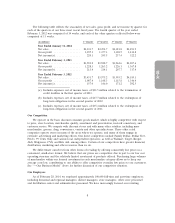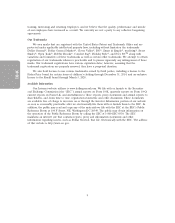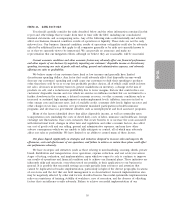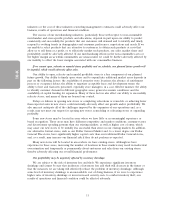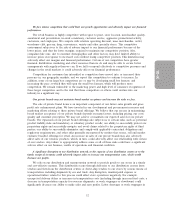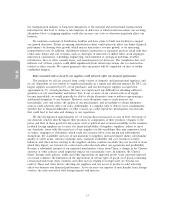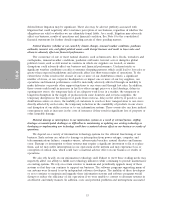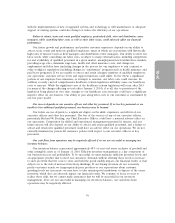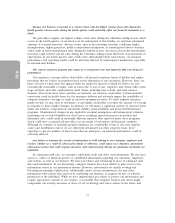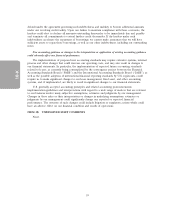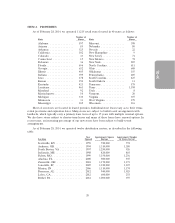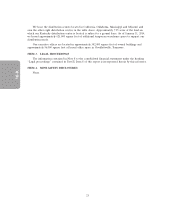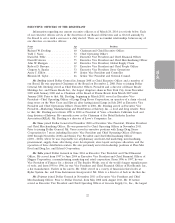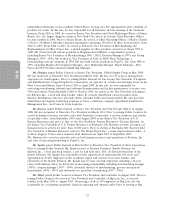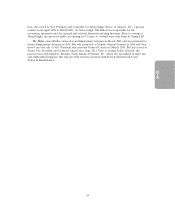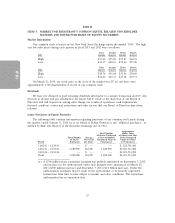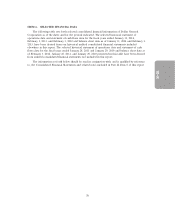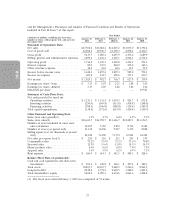Dollar General 2013 Annual Report Download - page 94
Download and view the complete annual report
Please find page 94 of the 2013 Dollar General annual report below. You can navigate through the pages in the report by either clicking on the pages listed below, or by using the keyword search tool below to find specific information within the annual report.
Because our business is seasonal to a certain extent, with the highest volume of net sales during the
fourth quarter, adverse events during the fourth quarter could materially affect our financial statements as a
whole.
We generally recognize our highest volume of net sales during the Christmas selling season, which
occurs in the fourth quarter of our fiscal year. In anticipation of this holiday, we purchase substantial
amounts of seasonal inventory. Adverse events, such as deteriorating economic conditions, higher
unemployment, higher gas prices, public transportation disruptions, or unanticipated adverse weather
could result in lower-than-planned sales during the holiday season. An excess of seasonal merchandise
inventory could result if our net sales during the Christmas selling season fall below seasonal norms or
expectations. If our fourth quarter sales results were substantially below expectations, our financial
performance and operating results could be adversely affected by unanticipated markdowns, especially
in seasonal merchandise.
Our current insurance program may expose us to unexpected costs and negatively affect our financial
performance.
Our insurance coverage reflects deductibles, self-insured retentions, limits of liability and similar
provisions that we believe are prudent based on the dispersion of our operations. However, there are
types of losses we may incur but against which we cannot be insured or which we believe are not
economically reasonable to insure, such as losses due to acts of war, employee and certain other crime,
wage and hour and other employment-related claims, including class actions, and some natural
disasters. If we incur these losses and they are material, our business could suffer. Certain material
events may result in sizable losses for the insurance industry and adversely impact the availability of
adequate insurance coverage or result in excessive premium increases. To offset negative insurance
market trends, we may elect to self-insure, accept higher deductibles or reduce the amount of coverage
in response to these market changes. In addition, we self-insure a significant portion of expected losses
under our workers’ compensation, automobile liability, general liability and group health insurance
programs. Unanticipated changes in any applicable actuarial assumptions and management estimates
underlying our recorded liabilities for these losses, including expected increases in medical and
indemnity costs, could result in materially different expenses than expected under these programs,
which could have a material adverse effect on our results of operations and financial condition.
Although we continue to maintain property insurance for catastrophic events at our store support
center and distribution centers, we are effectively self-insured for other property losses. If we
experience a greater number of these losses than we anticipate, our financial performance could be
adversely affected.
Any failure to maintain the security of information we hold relating to our customers, employees and
vendors, whether as a result of cybersecurity attacks or otherwise, could expose us to litigation, government
enforcement actions and costly response measures, and could seriously disrupt our operations and harm our
reputation.
In connection with sales, we transmit confidential credit and debit card information. We also have
access to, collect or maintain private or confidential information regarding our customers, employees
and vendors, as well as our business. We have procedures and technology in place to safeguard such
data and information. To our knowledge, computer hackers have been unable to gain access to the
information stored in our information systems. However, cyberattacks are rapidly evolving and
becoming increasingly sophisticated. Additionally, under certain circumstances, we may share
information with vendors that assist us in conducting our business, as required by law, or with the
permission of the individual. While we have implemented procedures to protect our information and
require appropriate controls of our vendors, it is possible that computer hackers and others might
compromise our security measures or those of our technology and other vendors in the future and
17
10-K



